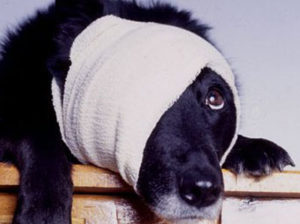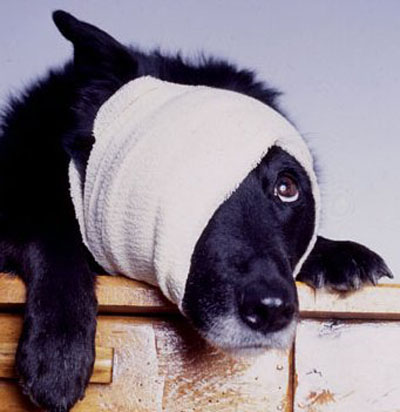First Aid for Injured animals
We at Ourvadodara regularly get calls regarding injured animals on the road, or sick because of the season. So here we want to share with you few tips on how to give first aid to those animals to give temporary relief till you take them to nearest hospital or call any of the NGOs.
we want to share with you few tips on how to give first aid to those animals to give temporary relief till you take them to nearest hospital or call any of the NGOs.
Injured in a road accident
For such situation try to approach the animal if only he/she appears calm/friendly. Carefully inspect the body for fractures/wounds or any other injury. If the animal is fatally injured try to call any vet or animal protection organization. If the injury is not that fatal try to give the first aid explained below.
Excessive Bleeding
If there is continuous bleeding find a piece of cloth and place it tightly against the blood flow. Placing a light towel or cloth over the animal’s head can decrease his/her awareness of nearby activity or noises that may cause fearful and aggressive reactions. Incessant bleeding can be stopped by pressing down firmly on the bleeding area with fingers or the palm of the hand, and then firm, but not tight, bandage should be applied.
Unconscious Animal
In such a situation, try to shift the animal in the corner and try to find the reasons for unconsciousness. Sprinkle water on the face and body of the animal. If it doesn’t wake up then there might be some serious head injury and the animal will need immediate doctor’s attention.
Howling in pain
Usually due to some injuries animals keep howling in pain. Try to calm it. If it is some kind of small injury, then dissolve one normal painkiller (find one for animals, if worst case scenario then use the human pain killer) half for baby animals and full for bigger animal in water or milk. This will lessen their suffering.
Electrical Shocks/Burns
For such cases, following guidelines should be followed:
• Check for signs of shock and treat them as a priority.
• Apply a clean, dry dressing to the burned area. Be careful to avoid using loose-fibered textiles such as cotton — the threads will stick to the wound and cause more problems.
• Wrap the dressed area with clean, torn sheets and take the animal to the vet immediately.
In addition to treating the burns, the doctors must prevent the animal from going into shock.
The animal must be given either plain water or water diluted with glucose.
Some Useful Tips:
Pulse Taking: The normal pulse rate of cats is 110-140 beats/minute, and of dogs, 80-120 beats/minute. The smaller the breed, the higher the pulse. Put your index and middle finger over the artery at the point where it crosses the thigh bone on the inside of the thigh. Count the pulse rate for 10 seconds and multiply by 6.
Artificial Respiration: If possible, lay the animal on its right side, open its mouth and take out anything blocking the air passage. Pull the tongue forward. Press down firmly with both hands below the shoulder and over the ribs. Release immediately and briskly.
Mouth-to-mouth Respiration: Clear the animal’s mouth of any foreign obstacles, hold it closed and blow into nostrils.
The most important thing to be remembered here is that the injured animal should be approached very cautiously, and one should take right precautions for individual safety first, as the animal injured an in pain always tends to be defensive and may scratch or bite.









